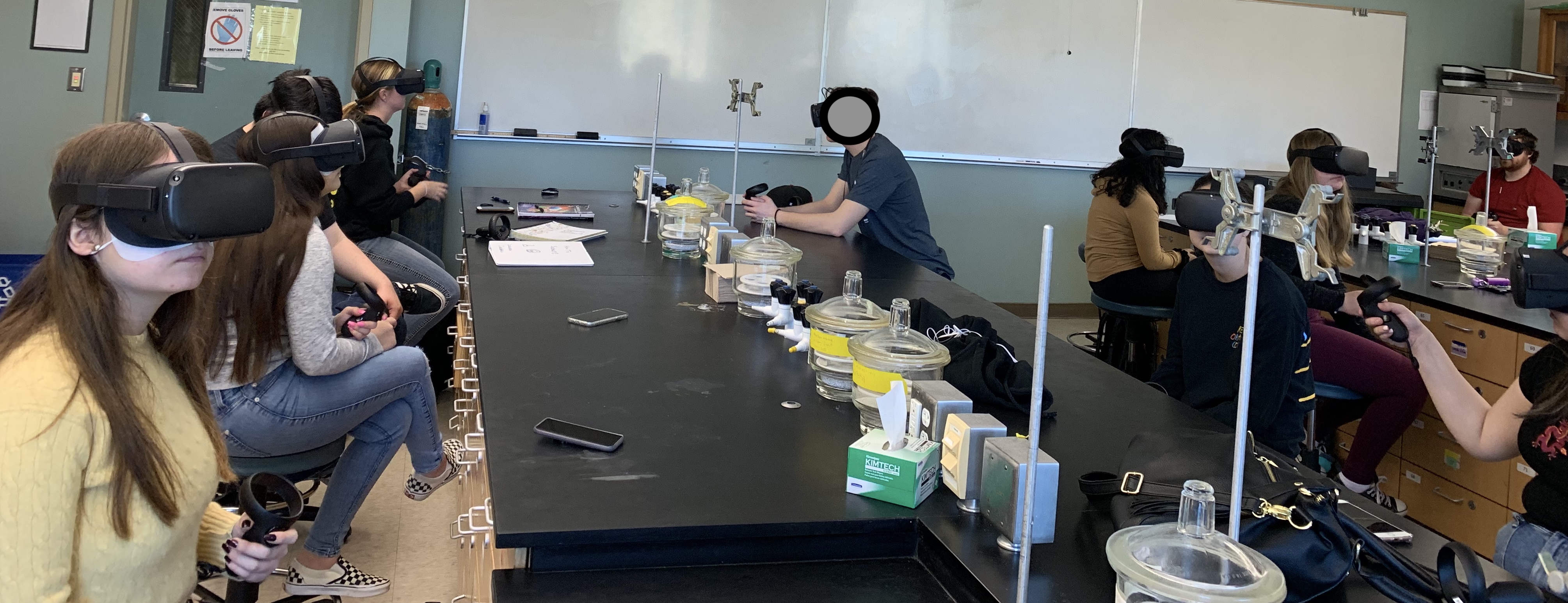Last year, members of the Chemistry Department met with Dr. Chris Tassone, founder of SAMA Learning to learn more about the chemistry virtual reality software SAMA was developing. With a Lab Innovations with Technology Grant from the CSU’s Chancellor’s Office, Dr. Lares has spearheaded an initiative to incorporate chemistry virtual reality lessons into Quantitative General Chemistry first-year learning cohort with a goal to expand usage to students in other chemistry courses. These virtual reality headsets along with the Sama Learning courseware may increase the ability for students to conceptualize abstract concepts that may hold them back from engaging in chemistry.
The Chemistry Department at SSU is dedicated to student success and active learning pedagogy, leading a number of active learning curricula and always exploring new ways to help students learn chemistry. The Chemistry department is employing and exploring many tools that can be used as manipulatives and having these virtual reality lessons will add to that arsenal that allows our faculty to utilize tangible activities for abstract concepts that might be difficult for some learners to visualize.
Often students do not engage with chemistry because of these abstract concepts and instead lean toward biology or kinesiology where there are more relatable ideas. However, all of these sciences are grounded in abstract concepts and even some of the more concrete concepts have applied virtual reality to engage students. The topics from SAMA Learning being covered this semester are: Balancing Chemical Equations, Atomic Orbital Theory, Periodic Trends, Bonding (I) VSEPR, Bonding (II) Molecular Orbital Theory, and Hybridization.
This project is a pilot initiative with support from the Faculty Center with goals to make these technologies accessible to all STEM learners. SSU’s Faculty Center has funded the development of the Virtual Immersive Teaching and Learning (VITaL) Lab as part of the SSU Makerspace in partnership with the University Library and the School of Science and Technology. Drs. Lares and Lipp are monitoring student’s long-term performance to see if a decrease in the DFW rates for students who have engaged with this technology. They also hope this may increase the number of students pursuing degrees in the STEM fields, and anticipate that students who have traditionally been less successful in STEM classes will be able to interact with the material (with this courseware) in a way that supports them towards mastery.
 Students are able to access the SAMA Learning virtual reality lessons via standalone Oculus Quest virtual reality headsets that are brought directly to the chemistry lab (see photo). Immersive technology like VR is ideal for hard-to-learn STEM subjects not only because of the advanced visualization it inherently provides, but because it provides a new environment to implement that can significantly improve learning.
Students are able to access the SAMA Learning virtual reality lessons via standalone Oculus Quest virtual reality headsets that are brought directly to the chemistry lab (see photo). Immersive technology like VR is ideal for hard-to-learn STEM subjects not only because of the advanced visualization it inherently provides, but because it provides a new environment to implement that can significantly improve learning.
The future of the use of this type of technology is unclear due to continual funding needed to provide licensing for access to the VR software and the dynamics of the staff support that is also required to roll out to other learners. However, this pilot project will determine our ability to allow increased access to more users. --Dr. Monica Lares, Department of Chemistry

